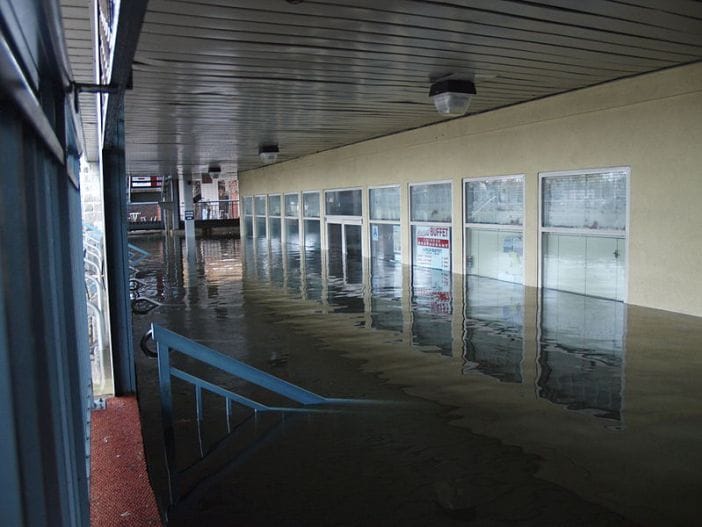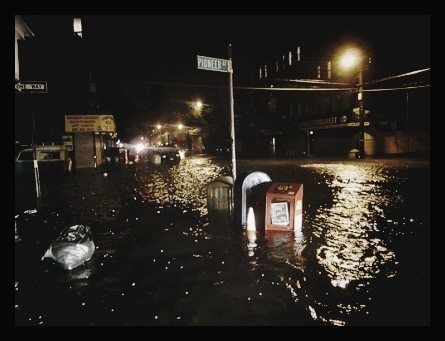Direct Link Between 2012 Sandy Flooding & Climate Change, U.N. Reports This Week


As Brooklyn — and the rest of the U.S. — were transfixed by the presidential elections, U.N. scientists released a new report with direct relevance to our area.
According to an analysis released Tuesday by the World Meteorological Organization, Superstorm Sandy was one of several “high-impact” global weather events over the last five years whose likelihood was increased by climate change.
The October 29th, 2012 storm caused the deaths of 43 New York City residents and created $19 billion in economic damage across the five boroughs. Sandy had a particularly devastating impact on the Brooklyn-Queens waterfront and Southern Brooklyn, areas which the City, State and federal governments are now spending hundreds of millions to protect from rising seas.
A “strong influence” from human-induced climate change was “found in the risk of coastal storm surge flooding associated with Hurricane Sandy in 2012,” the WMP report states.
Sandy’s storm surge, “coming on top of the spring high tide, created a ‘storm tide’ of over 14 feet above Mean Low Water at the Battery,” the City reported in 2013. A “staggering” 51 square miles of New York City flooded, the report said, 17 percent of the city’s total land mass.

Tuesday’s report from the World Meteorological Organization was submitted to the parties of the U.N. Framework Convention on Climate Change, which finalized an agreement in Paris last year to curb global carbon emissions.
“The Paris Agreement aims at limiting the global temperature increase to well below 2 ° Celsius and pursuing efforts towards 1.5 ° Celsius above pre-industrial levels,” said WMO Secretary-General Petteri Taalas in a statement.
“This [WMO] report confirms that the average temperature in 2015 had already reached the 1°C mark. We just had the hottest five-year period on record, with 2015 claiming the title of hottest individual year. Even that record is likely to be beaten in 2016,” Taalas continued.
WMO will also release a draft assessment of the current state of the climate to serve as background information for climate change negotiations happening next week in Morocco, which are intended to determine the next steps for the Paris Agreement.
“The effects of climate change have been consistently visible on the global scale since the 1980s: rising global temperature, both over land and in the ocean; sea-level rise; and the widespread melting of ice,” Petteri Taalas noted. “It has increased the risks of extreme events such as heatwaves, drought, record rainfall and damaging floods.”
According to the WMO, other recent high-impact weather events have led to the deaths of tens of thousands across the globe.
These events include a 2010-2012 drought in East Africa, which caused an estimated 258,000 excess deaths, along with a 2013-2015 drought in southern Africa; flooding in South-East Asia in 2011, which killed 800 people and caused more than US$40 billion in economic losses; 2015 heatwaves in India and Pakistan in 2015, which claimed more than 4,100 lives; and Typhoon Haiyan which killed 7,800 people in the Philippines in 2013.
President-elect Donald Trump has stated publicly that he does not believe in human-induced climate change, and will pull the U.S. out of the Paris Climate Agreement.
“If he does,” the New York Times reported today, “experts in climate change policy say, the world may have no way to avoid the most devastating consequences of global warming, including rising sea levels, extreme droughts and food shortages, and more powerful floods and storms.”
It is unknown whether the incoming Trump administration will continue to back federally-funded climate resiliency projects in New York City and across the U.S.




